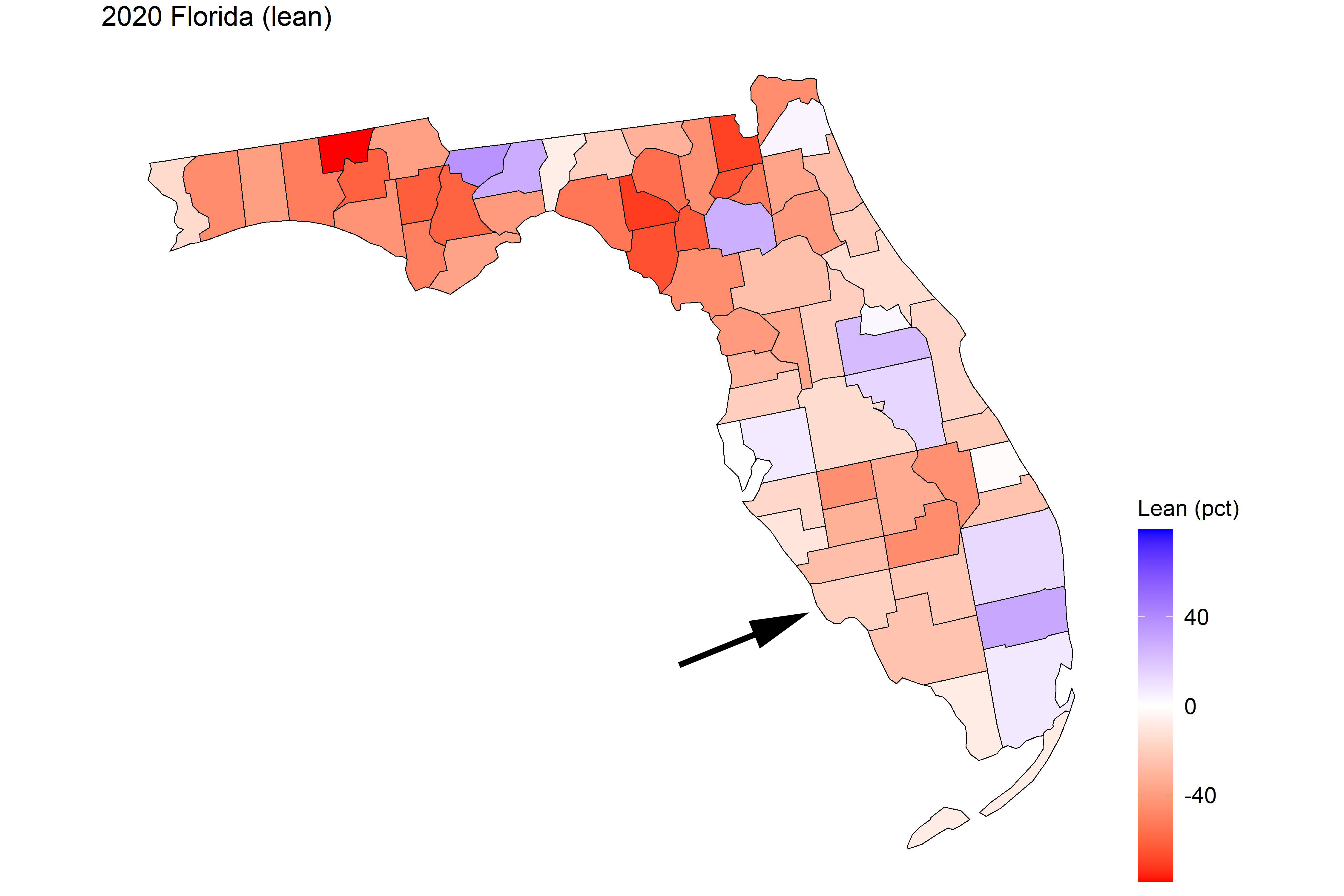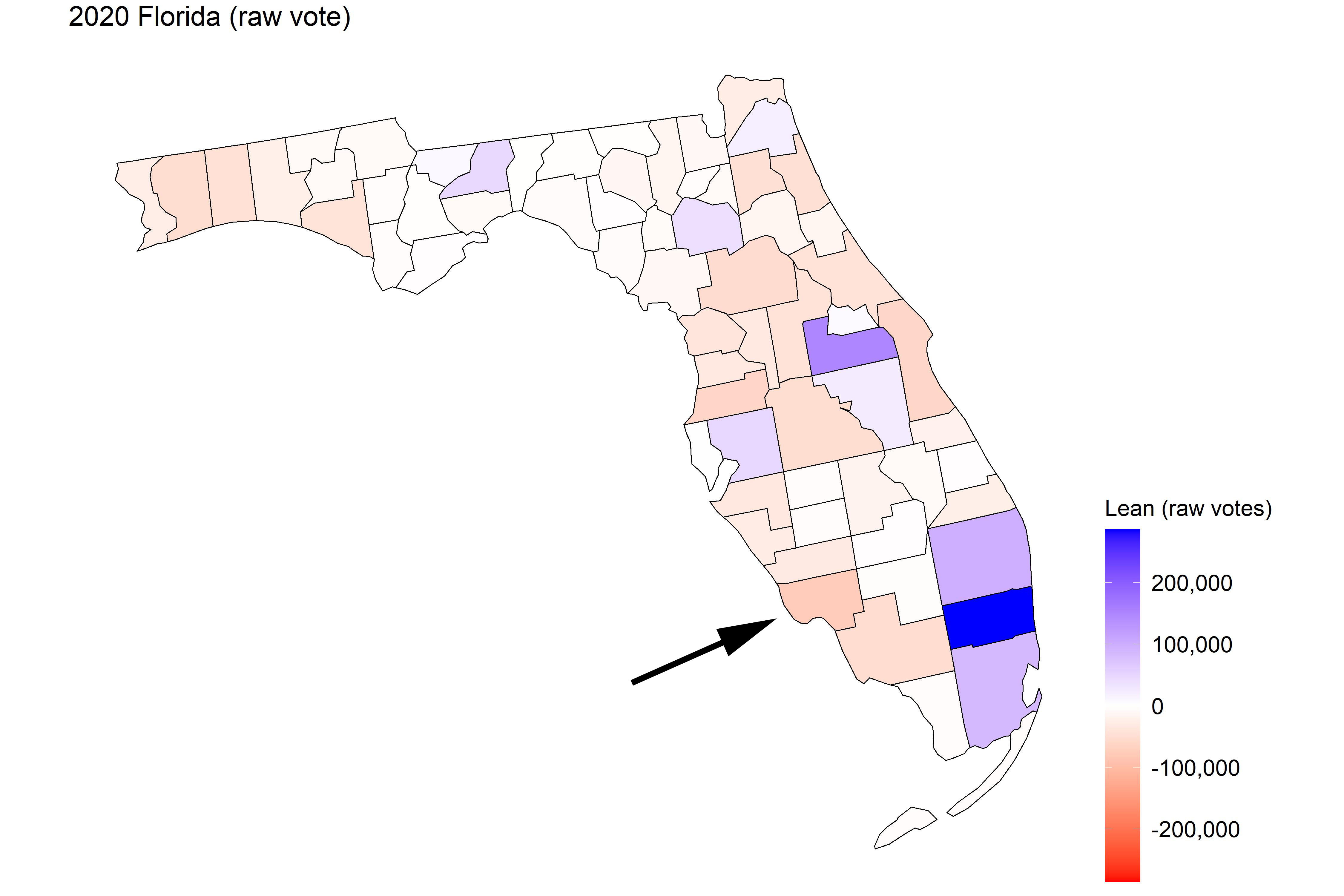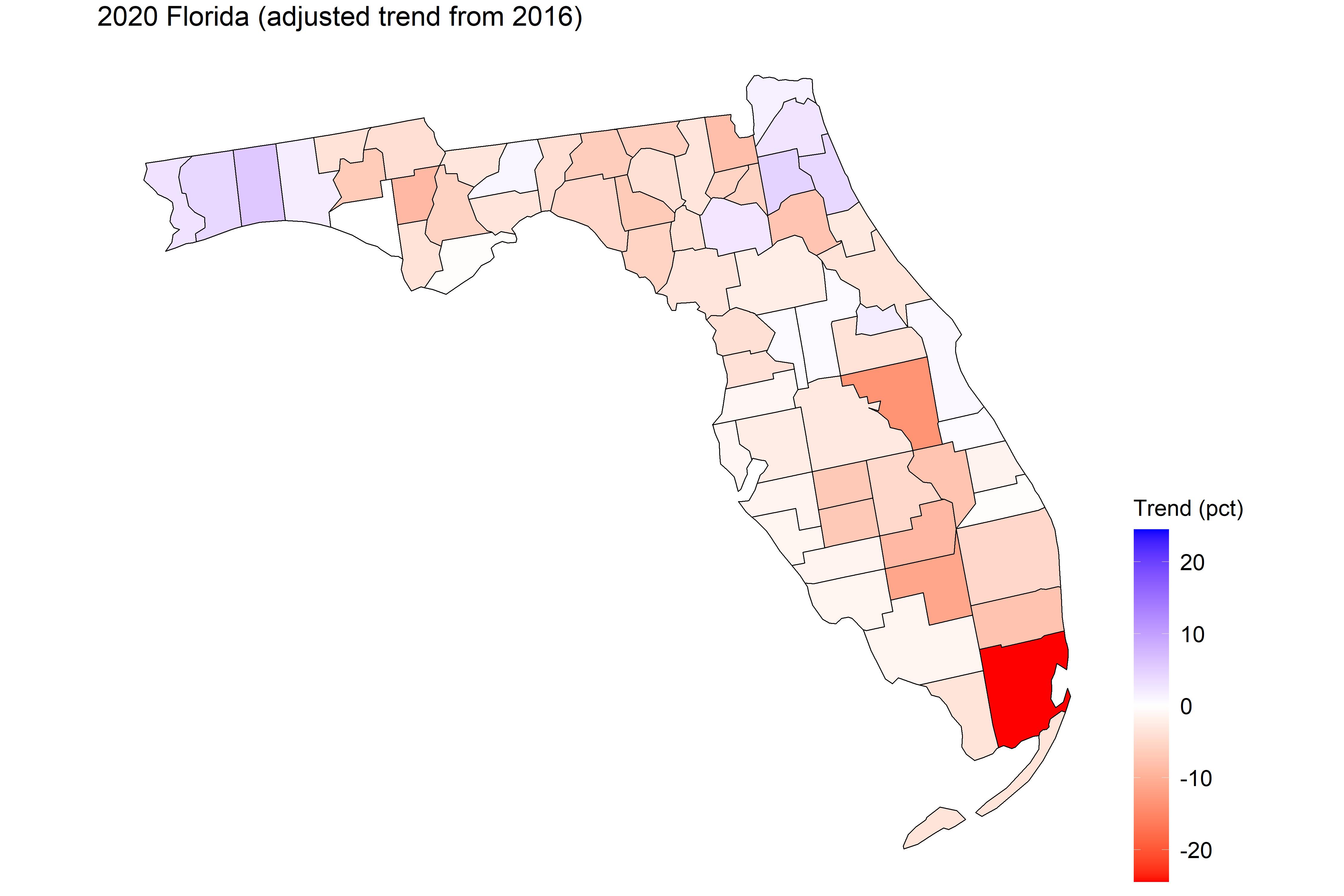At the national level, Joe Biden improved on Hillary Clinton’s margin by 2.4 points (Clinton “won” by 2.1%, while Biden beat Trump by 4.5%). In 2016 Trump won Florida by a mere 1.2%, so all things being equal, Biden should have taken Florida. But of course, all things aren’t equal, and Trump improved his Florida margin to 3.4%.
Here’s the county lean (the intensity of red or blue indicating the strength of victory; white means the county was 50/50):

Of course this doesn’t account for the different populations of each county. As we did with Pennsylvania, here is raw vote lean (how much the candidate won each county by, in raw vote total):

The three counties in the southeast corner (Miami-Date, Broward, Palm Beach) provided Biden with a big margin, but it wasn’t enough to overcome the steady collection of Trump votes from the rest of the state.
What’s the deal with the arrow? It points out (get it?) one of the advantages of the Raw Vote map. The arrow points to Lee County. In the first map, Lee doesn’t stand out – vaguely pink/orange, but not as intensely pro-Trump as many of the counties in north Florida. But those solid-red counties have low populations, while Lee is fairly large. So when you look at the raw vote map, Lee stands out a bit (darker orange than others). In fact, Lee provided Trump the largest plurality of votes of any county in the state.
So is that why he won the state by an unexpectedly-large margin? Nope, Lee performed pretty much as expected. What happened was that strong Democratic counties underperformed, as is show by the Trend map:

The colors in this map reflect the change in each counties’ vote from the previous election (adjusted for the national trend). Miami-Dade (solid red in the lower right) still voted for Biden, but by a much smaller margin than in 2016 (Clinton won by 30 points in 2016; Biden, 7 points this year). The trend in this one county alone explains more than half of Trump’s margin of victory in the state.
Why did this happen? Most analysis points to Trump’s better-than-expected performance with Hispanic voters. They still lean toward the Democrats, but not as much as 2016, which was the nadir of Hispanic support for Republicans.
